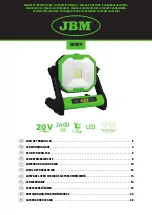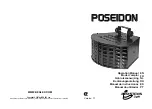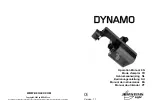
3
SAFETY SUMMARY
LITHIUM BATTERY HAZARDS
Lithium batteries are very energy dense and provide a high level of power to their
respective applications. Care must be taken to properly manage all lithium batteries
in their use, charging and storage to ensure safety for the operator and equipment
serviced.
All rechargeable lithium batteries are potentially hazardous and can present a serious
FIRE HAZARD if damaged or improperly used. A fire is most likely to occur during the
charging process under the following circumstances:
a. THE BATTERY HAS BEEN FULLY DISCHARGED AND IS NOT
RECHARGED SHORTLY AFTERWARD. Lithium batteries should be recharged
within 24 hours of use, particularly if fully or near fully discharged.
b. CHARGING IS ATTEMPTED AT TEMPERATURES BELOW 40°F (4°C).
Charging below 40°F (4°C), causes a chemical reaction in the battery cells that
can cause permanent damage and the possibility of fire or explosion during
charging.
c. THE BATTERY HAS BEEN EXPOSED TO LIQUIDS, ESPECIALLY
SALTWATER. Exposure to liquids can cause internal corrosion or damage
to the cells or to the internal Battery Management System (BMS). The BMS
protects the battery from overcharging, high self-discharge or imbalanced
charging of the cells, any of which can present the possibility of fire during
recharging.
d. OPERATING OR CHARGING A BATTERY THAT HAS BEEN DAMAGED
FROM DROPPING OR FROM SHIPPING DAMAGE. If your unit has a crack
on the outer case, it should not be charged, as it may may contain a damaged
battery.
e. USING A CHARGER OTHER THAN SPECIFICALLY DESIGNATED FOR THE
PARTICULAR BATTERY. Each battery wall charger provides charging voltage,
current and charge control parameters specific to that particular wall charger.
The specific parameters of the wall charger provided with your unit exactly meet
the charging requirements of its internal battery. These could be very different
from other lithium battery wall chargers and are certainly different than chargers
for use with SLA, NiCd, NiMH, or other rechargeable batteries. Never use a
charger other than the one provided with your unit – this could present a serious
fire risk.




























